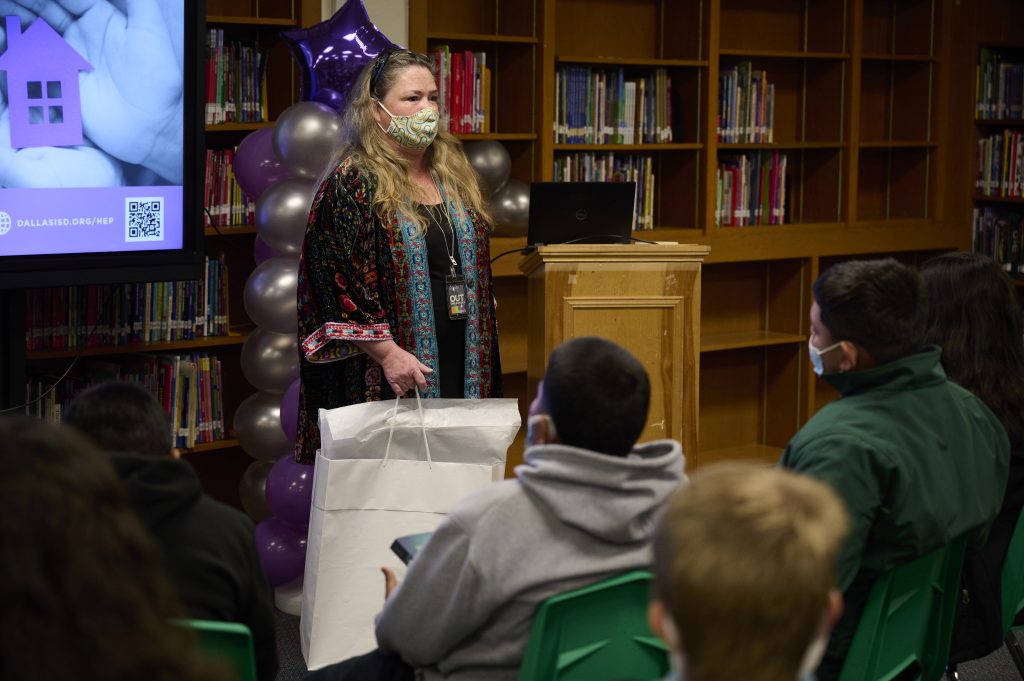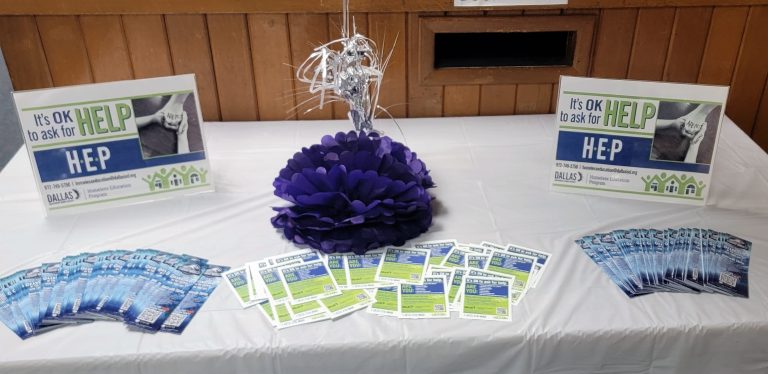The Dallas ISD Homeless Education Program (HEP) wants to remind families that “It’s OK to ask for help.”
This summer, HEP published a virtual, self-paced training that can help staff learn about the ways they can support students who are struggling with homelessness.
Through HEP, the district’s housing insecure population can access school supplies, purchase uniforms, hygiene items, transportation, referrals to outside programs, and items to meet other specific needs.
Students and families going through a crisis can reach the HEP at 972-749-5750 or at homelesseducation@dallasisd.org.
The Homeless Education Program Training can be found in Cornerstone, or on their website at www.dallasisd.org/Domain/109
We spoke with HEP Manager Ashley Marshall, about the ways this training can benefit the Dallas ISD community and about the support her department provides to families in need.
What is this training and why is it important that district personnel take it?
We’re aiming for all the staff in the district to take the Cornerstone training because, more often than not, they’ve met a student that’s battling homelessness and didn’t know it at the time or they did know and they did not know how to approach it. It’s a difficult thing to say to a mom on the phone “Oh, you’re in a homeless situation.” It can cause some feelings in them.

This is a way to get everyone trained so that they can know what to look for in a homeless student. For example, a child that hoards food might be doing so because they don’t have food when they get home. A child who rassures something that they have been given at school might treasure that because they don’t have those things at home. So, we train district personnel to look at those signs.
I think the pandemic has highlighted the reasons why we need to know about homelessness. We’ve had calls from families and district staff alike who say ‘I’m ready to be evicted. I don’t know what to do. Where can I get resources? Where can I get help?’ That’s why I said: when you’re talking to someone, you don’t really know what situation they’re in. Most of us are all one paycheck away from homelessness, and the pandemic really put that in great light. A lot of people lost their jobs, and didn’t have money, and didn’t know where their next paycheck was coming from.
There are district personnel who call us and say “I didn’t know we had this program in the district.” And it’s been around for more than 20 years. We want families to know that we’re here for families, as well as for staff. That is why we want people to know, at least our phone number, or that they can go to the district website.
If we had our way, this would be a required training for everybody. We know that’s hard to do, but hopefully a lot of people will give it a try to learn how they can better support our kids.
What are some ways teachers or staff can help?
If a teacher meets a student who is battling homelessness, they can reach out to the family and have that initial contact since they already have the connection. It’s hard for me to pick up the phone and say “I heard from someone that you’re struggling.” But once a teacher or someone who the student trusts makes that connection, they can refer them to us and we can do an intake and see what they really need.
There are four ways that students can struggle with homelessness. The majority of our kids are doubled-up, meaning that there are two or more families living together. A lot of families are able to get together and work together and take care of the kids and each other, and they usually don’t reach out. We have our hotel families, our shelter families, and our families that are unsheltered.
We want every family to know that it’s OK to ask for help. We know that parents are probably afraid that we’re going to call CPS because they feel like they’re not providing adequate care for their children, or that we’re going to call the police, or ICE. I want to assure that none of us are doing that and that’s the farthest thing in our minds.
What we want to do is make a connection and help them figure out what their next steps are. And at the same time, we want to provide for their children so that they can succeed and achieve. We have students that go to Booker T. Washington, to Townview, and to all of our best schools, who are still in homeless situations. A lot of people have the misconception that homelessness means something else, but it really doesn’t. We want to help them take that extra step, so that they can go into their TAG classes, or career institute, or whichever program they want to go into, and achieve.
What are some ways that your department supports students who struggle with homelessness?
Some of the ways we support our students is by helping them get enrolled. A lot of times, a student who’s struggling with homelessness has no documents. We help get them enrolled immediately.
We help with transportation. Last year, we had 350 requests to do transportation for 350 Dallas ISD students who were battling homelessness and were living outside the district. Sometimes the students tell me: ‘my teacher told me that I have to move out of the school because I’m moving to Irving to stay in a shelter.” But that’s not the case. We are required to provide that transportation and Dallas ISD pays for it. That way teachers know that they don’t have to put an extra stressor on the parent when they’re ready to lose their home. That way, they know that we’re going to try to keep the schooling stable.
We help provide school supplies and materials. We have emergency food. We have uniforms. We have an Amazon wishlist that we share regularly, so that we can get items that we share regularly and that it’s hard for us to buy.
We got a donation from the Houston-based organization Undies for Everyone, so we have packs of underwear that have five pairs for elementary and middle school kids. We’re partnering with Soles for Souls and they’re getting ready to donate 500 to a 1,000 pairs of shoes that we can donate during the Spring. Every Back to School season and Christmas, the Dallas ISD MWBE department does a gift card drive. So when a family calls us and has no gas to get to school, we have a gift card we can hand out, or we can run to Walmart and get them some food.
The things that we don’t provide are housing and shelter. A lot of folks call and think that, when I answer the phone I’m going to direct them to an apartment. Adn unfortunately, that isn’t what we do. But we can connect them with those resources and try to get help from them.

